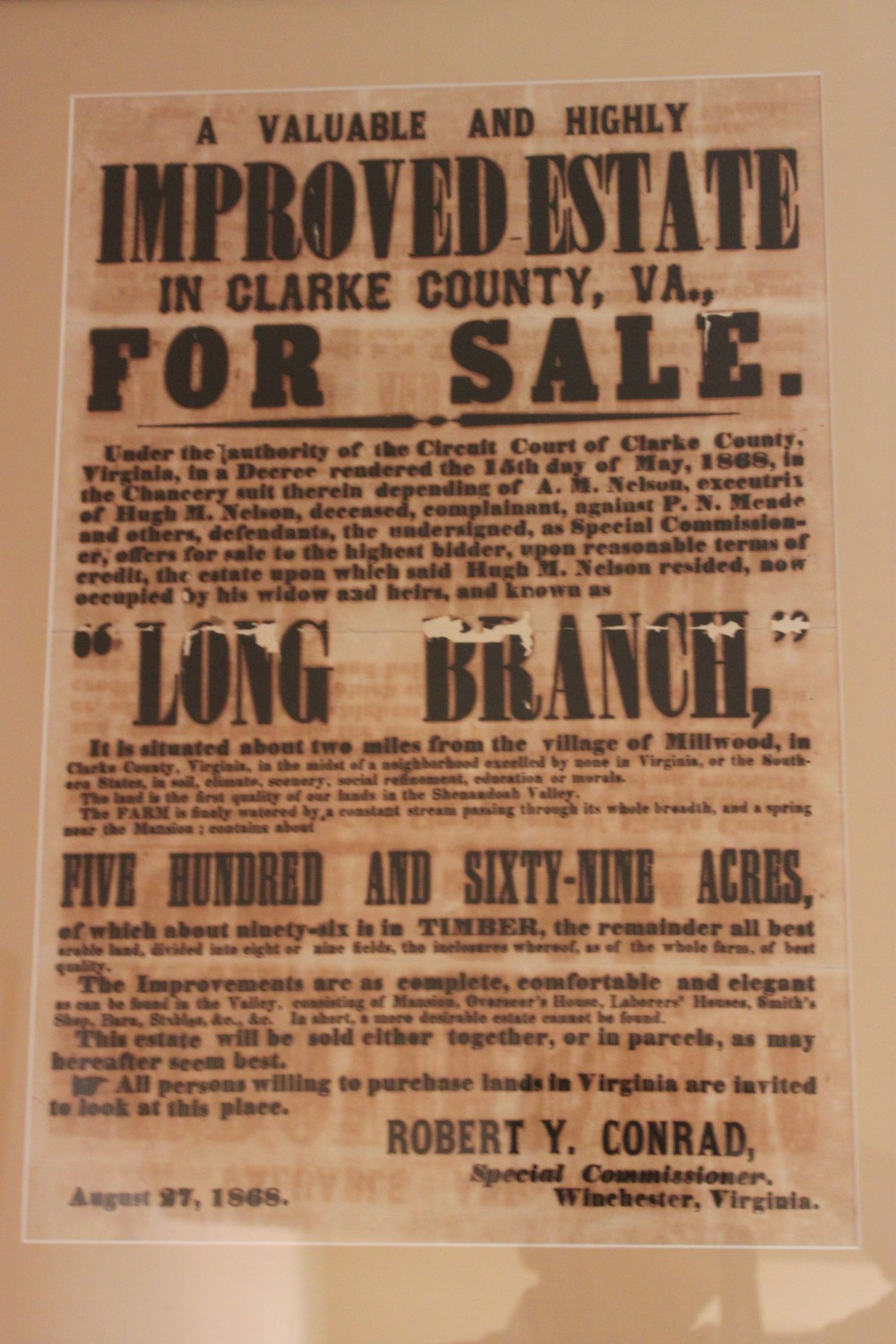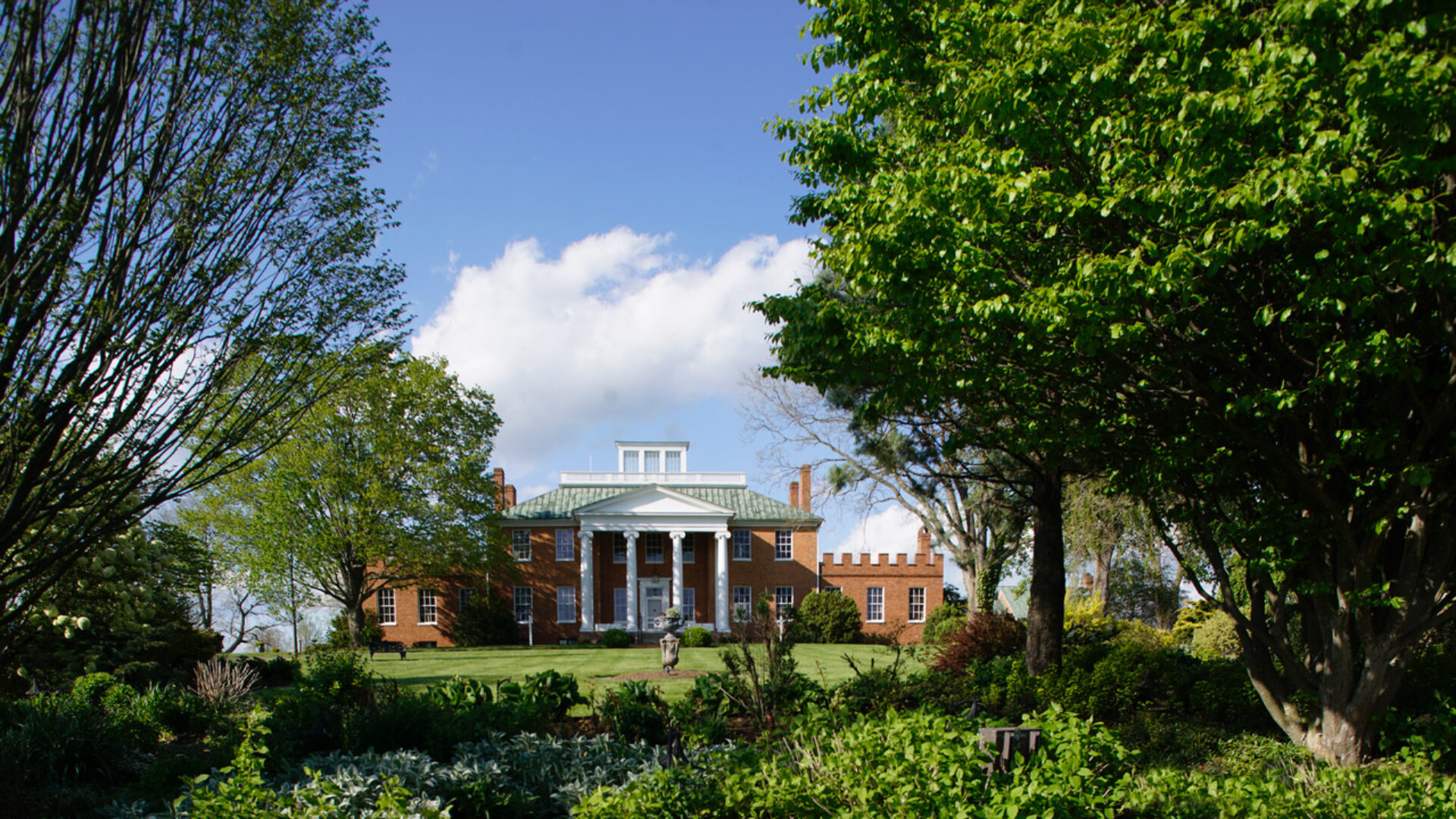 The 1868 Auction of Long Branch was just one example of the fate that fell on many Southern Plantations after the Civil War. Some estate owners were lucky enough to be able to keep their plantations, but many faced foreclosure on debts or had seen their homes burnt to the ground as a tactic of total war. Adelaide Nelson resourcefully purchased back much of Long Branch at its auction, keeping the plantation in the Nelson family name. A neighboring estate, Carter Hall, was also fortunate, having escaped destruction during the Civil War, though its livestock had been stolen and its fields lay fallow. The Burwells of Carter Hall, like so many other families living in the post-Civil War South, faced previously unknown poverty. Just a few years after the death of her husband in 1873, Agnes Burwell was forced to sell Carter Hall. Another nearby plantation, Oatlands, could not maintain itself as a wheat plantation after emancipating its slaves. Faced with heavy debt, the Carter family there tried running the estate first as a school for girls, and then as a summer boarding house. They sold the plantation in 1897.
The 1868 Auction of Long Branch was just one example of the fate that fell on many Southern Plantations after the Civil War. Some estate owners were lucky enough to be able to keep their plantations, but many faced foreclosure on debts or had seen their homes burnt to the ground as a tactic of total war. Adelaide Nelson resourcefully purchased back much of Long Branch at its auction, keeping the plantation in the Nelson family name. A neighboring estate, Carter Hall, was also fortunate, having escaped destruction during the Civil War, though its livestock had been stolen and its fields lay fallow. The Burwells of Carter Hall, like so many other families living in the post-Civil War South, faced previously unknown poverty. Just a few years after the death of her husband in 1873, Agnes Burwell was forced to sell Carter Hall. Another nearby plantation, Oatlands, could not maintain itself as a wheat plantation after emancipating its slaves. Faced with heavy debt, the Carter family there tried running the estate first as a school for girls, and then as a summer boarding house. They sold the plantation in 1897.
The Civil War had harsh economic ramifications on Southern farms and plantations. Much of the land had been ravaged by war, the livestock slaughtered or stolen, and the crops taken or destroyed. The small percentage of those who were plantation owners found themselves without a source of labor, and many plantations had to be auctioned off (often at greatly reduced value) to settle debts and support the family.
-Casey Marion, Long Branch Plantation Intern
